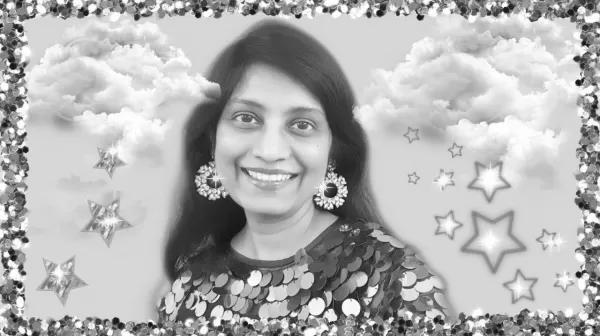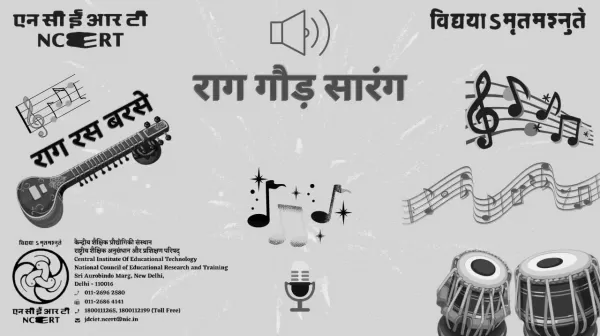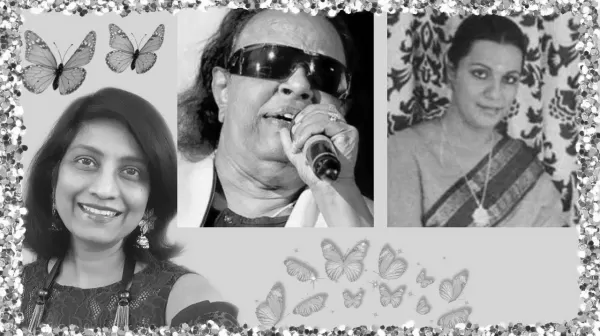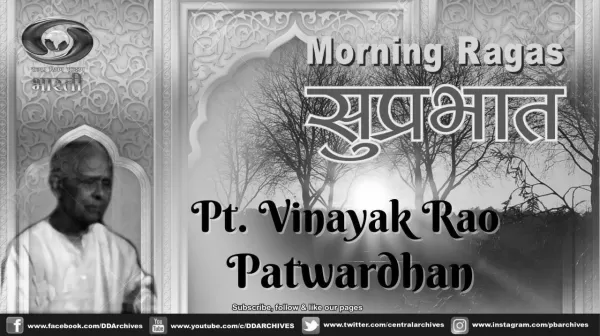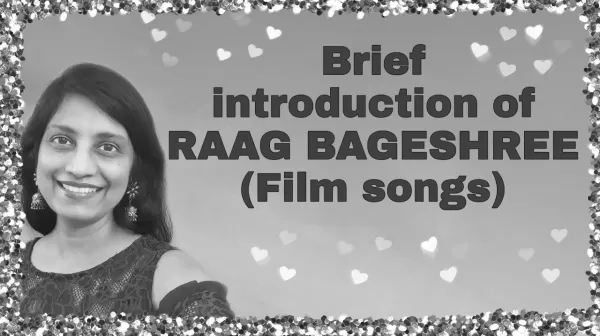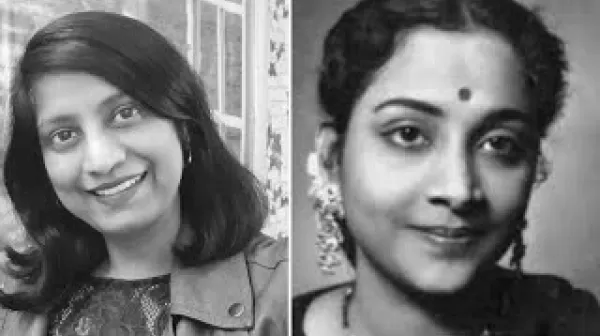राग
Dadra-2 Rag Desi "Aisi Barsat Mein"
Style of Dadra is very similar to Thumri but the tempo of Dadra is faster than Thumri thus it allows more freedom to be playful with musical note. The pivotal emotion is ornamentation. Dadra style is sung in Dadra taal itself. Dadra taal is fast and playful in nature. Songs based on dances and ornamentations are mainly sung in this. Let’s have some short but basic information about Rag Des before we listen to the Dadra based on this Rag. Gandhar (Me) and Dhaiwat (La) are prohibited in the ascension of this Rag, both Ni (Ti) notes are applied and rest all nots are natural.
Thumri 5 Rag Bhairavi "Phul Gendwa Na Maaro"
Thumri is one of the styles of Hindustani music having parts and sub parts. It comes under semi classical music. Expression of emotions is more emphasized in it in comparison to the purity of Rag. So is the reason that it is categorized under semi classical singing. The “Bandish” (Determined melody structure) is short in Thumri with prominence of essence of adornment and ornamentation. However, devotion based Bandish is also sung in Thumri. The Ragas used in Thumri are generally of fickle and playful tendencies such as Khamaj , Peelu, Bhairwi, Kafi, Gaurh Sarang and Des etc.
Dadra 5 Rag Khamaj "Ab Mose Rar Kyon Machai"
Style of Dadra is very similar to Thumri but the tempo of Dadra is faster than Thumri thus it allows more freedom to be playful with musical note. The pivotal emotion is ornamentation. Dadra style is sung in Dadra taal itself. Dadra taal is fast and playful in nature. Songs based on dances and ornamentations are mainly sung in this Rag. Let’s have some short but basic information about Rag Khamaj before we listen to the Dadra based on Rag Des. The Wadi and samwadi swaras of Rag Khamaj is Gandhar and Nishad respectively.
Kajri 1 Rag Mishra "Peelu Aae Sawan Adhik Suhavan"
Kajri is semi classical style of music. It is a well-known folk genre evolved eventually from the folk of Uttar Pradesh, one of the Indian states. It is mainly sung during the rainy season which is mid-July to mid-August according to English calendar. Now, let have a brief information about Rag Mishr Peelu in Taal Kaharwa. Rag Peelu derives from Kafi thhat or melody family. Its Wadi swara is Gandhar (Me) and Samwadi swara is Nishad (Ti). In the ascension of this raga Rishabh (Re) and Dhaiwat (La) are forbidden and both Gandhar (Ga), both Dhaiwat (La) and both Nishad (Ti) are used.
Khemta Rag Mishra Khamaj "Jahan Bole Panchhi More"
Style of Khemta resambles with Thumri but the tempo of Khemta is faster than Dadra and so, it permits the artists to be more playful. It is sung in Khemta Taal mainly with central idea of ornamentation. Let us know some salient features of Rag Khamaj before we listen to the Khemta based on this Rag. The Wadi and samwadi swaras of this Rag are Gandhar and Nishad (Me and (Ti). It is sung at the 2nd watch of the night. Music is not confined to the geographical boundaries. Indian Ragas can be played not only in Indian musical instruments but in western musical instruments as well.
Kajri 2 Rag "Bihag Garva Pahine Haar Chameli"
Kajri is one of the semi classical styles of Indian music originated from the folk music of the Indian state of Uttar Pradesh. It is mainly sung in the month of Savana, which is mid-July to mid-August in accordance with the English calendar. So let us listen to Kajri which is based on rag Bihag. Let’s have some basic information about Rag Bihag. This Rag is originated from Bilawawl that. In the ascension of this rag, Re and Dha (Re and La ) are forbidden. Both Ma (Fa) notes are used in it whereas all other notes are natural.
Chaiti -1 Rag Des "Jhukvan Pawan Jhakore"
Chaiti is semi classical style of Hindustani music. It has derived from the folk music of the Indian state of Uttar Pradesh and based on chaitra month i.e. the mid-March of English calendar. Semi-classical “Bandish” (Determined melody structure) are sung in it. Love, beauty of nature and the Holi festival (the Indian festival of colors) are the prominent themes of Chaiti. Chaitra month is also considered as the birth month of Shri Rama and thus, the scriptural descriptions of the childhood of Shri Rama are included in the singing structure of Chaiti.
Chaiti 2 Rag Mishra Khamaj "Baaje Re Abadh Main Badhiya"
Chaiti is semi classical style of Hindustani music. It has derived from the folk music of the Indian state of Uttar Pradesh and based on chaitra month i.e. the mid-March of English calendar. Semi-classical “Bandish” (Determined melody structure) are sung in it. Love, beauty of nature and the Holi festival (the Indian festival of colors) are the prominent themes of Chaiti. Chaitra month is also considered as the birth month of Shri Rama and thus, the scriptural descriptions of the childhood of Shri Rama are included in the singing structure of Chaiti.
Malhar 2 Rag "Miyan Malhar Maai Ban Bolan Lage More"
Based on rainy season Malhar is a semi classical style of singing. Malhar itself mean “the rain.” Semi classical “Bandish” (Determined melody structure) are chiefly sung in this rag. Its main themes of this rag are the rain, love and the nature. This rag has a very prominent place among the seasonal ragas. It creates very melodious environment. Now, before listening to Malhar based on Rag Miyan Malhar, let’s know in short regarding Rag Miyan Malhar. Rag Miyan Malhar has incepted from Kafi family. The wadi swara is Sa (Doh) and the Samwadi swara is Pa (Soh).
Chaiti-3 Rag Bhairavi "Aae Chait Manbhati"
Chaiti is semi classical style of Hindustani music. It has derived from the folk music of the Indian state of Uttar Pradesh and based on chaitra month i.e. the mid-March of English calendar. Semi-classical “Bandish” (Determined melody structure) are sung in it. Love, beauty of nature and the Holi festival (the Indian festival of colors) are the prominent themes of Chaiti. Chaitra month is also considered as the birth month of Shri Rama and thus, the scriptural descriptions of the childhood of Shri Rama are included in the singing structure of Chaiti.

